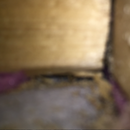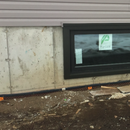Closed-cell spray foam — Basement insulation concerns
Hi everyone, any insight you can provide is much appreciated.
I am currently preparing to install spray foam (4in of 2lb closed cell) in my basement.
The plan is to insulate the full basement walls (concrete + pony wall section), plus the sill plate and rim joist pockets.
A couple of questions/concerns I had prior to going ahead with the install..
1) The framers did not use a sill-gasket or treated wood to use as shims to support the beam in the foundation beam pocket… the concern i have with spraying closed cell foam in or around the pocket now is that it will eliminate the opportunity for any water which has wicked up into the non-treated wood shims to evaporate… (the beam pockets are also approx 3ft above grade). I am considering having the pocket area left alone during the spray foam install to avoid the potential of trapping moisture. I know that i would have some heat loss from doing so, but it is a very small area and figure the risks don’t outweigh the benefit of sealing the pocket. Thoughts?
2) When inspecting to ensure that the sill sealer was properly placed under the sill plate (non-treated lumber), i noticed about a 1-2 inch gap where the framers ripped the gasket short at a corner.. as such theres a small section of untreated lumber in contact with the foundation wall..
from reading about spraying closed cell foam in my desired application, I read that by sealing the wall and sill plate with closed cell foam will increase the likelihood of any moisture in the concrete to wick into the plate.. should i be concerned about the 1-2 inch area with no capillary break? It is somewhat accessible and i can notch it out and correct if need be.
* of note, the sill plate is approx 3ft above grade at the location of the sill gasket void and it has north-west exposure, so there will be some afternoon sun on the area.
I’ve attached some pictures to help supplement the above items.
Thanks in advance for your help everyone. This forum has been a great resource for me throughout my house building experience.
Cheers
GBA Detail Library
A collection of one thousand construction details organized by climate and house part












Replies
Advice is usually climate-specific. Where are you located?
Climate Zone 7.
Thanks for pointing that out,
Rick
By far the best solution would be to install insulation on the exterior side of your basement wall. This will keep the concrete warm during the winter (and will therefore keep your beam safe).
If you insulate your wall on the interior, you risk the chance of rotting your beam. As you point out, you can omit the insulation near the beam pocket. But this is an imperfect solution, because the concrete will still be cold, and condensation and rot are still possible.
Another option is to cut off the end of the beam, and to support the beam on a new post and new concrete footing. If you do that, you'll be able to insert a layer of rigid foam between the end of the beam and the concrete wall.
-- Martin Holladay
Thanks Martin,
Another idea I was thinking of for around the beam was to box off around the beam pocket with 2-3 inch of rigid foam board then spray foam over/around the rigid foam board..
My thinking with this is that it would still created a continuous air/vapour barrier while maintaining an air gap around the beam in the pocket.
any thoughts/concerns with that approach?